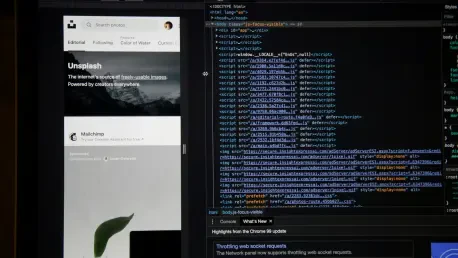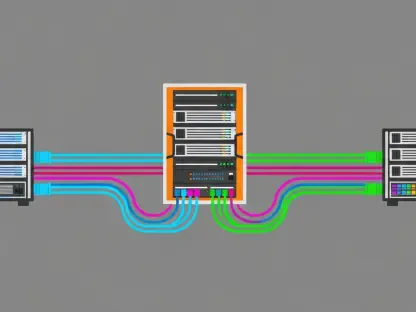In an era where technology is central to information accessibility, Zendalona emerges as a pioneer in developing Free and Open Source Software (FOSS) specifically for the visually impaired. Established by K. Sathyaseelan after a personal encounter with visual impairment at a tender age, the organization strives to dismantle barriers that hamper access to technology for visually impaired individuals. The initiative’s commitment to creating inclusive digital solutions sets a benchmark for future innovation focused on providing equitable access and opportunities to all users, regardless of physical limitations.
A Transformative Vision
Founder’s Personal Journey
K. Sathyaseelan’s journey began when he lost his sight at the age of ten, an event that significantly impacted his ability to interact with the world of information and technology. Faced with an acute shortage of accessible tools like screen readers and Braille resources, Sathyaseelan’s personal challenges became a powerful catalyst for change. Under his leadership, Zendalona embarked on a mission to bridge the accessibility gap by developing tools that accommodate the unique needs of the visually impaired. His firsthand experiences underscore the necessity of crafting tailored technological solutions, ensuring these tools are not only available but also effective in enhancing daily life, education, and employment opportunities for people with visual impairments.
Philosophy of FOSS
Central to Zendalona’s work is the philosophy of Free and Open Source Software, which is portrayed as more than just a technical methodology. FOSS embodies a social paradigm that fosters openness, collaborative development, and community empowerment. By prioritizing these principles, the movement ensures that technology is democratized, placing powerful tools in the hands of those who might otherwise be left marginalized. For communities such as the visually impaired who often encounter significant obstacles in accessing mainstream technology, the adoption of FOSS principles by Zendalona presents a transformative opportunity. This approach not only enables users to participate in ongoing technological evolution but also positions them as contributors, making sure that the technology evolves with inclusivity at its core.
Innovative Solutions
Accessible Coconut (AC)
The Accessible Coconut operating system, a GNU/Linux-based platform, reshapes the digital experience for users with visual impairments by integrating a suite of accessibility features into its core design. This innovative system comes equipped with a pre-installed screen reader, enabling spoken feedback for on-screen text and actions. Additionally, its compatibility with Braille devices and adaptive input methods underscores its commitment to accessibility. Features like customizable keyboard shortcuts and native speech output systems are designed to ensure a seamless computing environment. Such considerations eliminate the need for additional installations, making digital engagement swift and effortless, and underscoring digital inclusion from the outset.
Furthermore, the AC system supports a variety of languages and regional preferences, making it versatile and adaptable for users from different cultural backgrounds. The thoughtful integration of these features demonstrates Zendalona’s intention to empower visually impaired individuals by providing a comprehensive computing solution that adapts to user needs rather than requiring users to adjust to the technology. Accessibility and functionality are yoked together in a manner that promotes independence and enhances productivity, allowing individuals to engage with technology with confidence and ease.
Sharada Braille Writer (S.B.W.)
The Sharada Braille Writer stands as a testament to Zendalona’s dedication to enhancing digital literacy among visually impaired users through innovative tools. This Linux-based text editor supports comprehensive Braille input, employing Perkins-like methods that resonate with traditional Braille users. By supporting more than 40 languages, including several Indian languages, the software ensures a broad spectrum of users can benefit from its offerings. The intuitive design aligns key combinations with Braille dot patterns, allowing for easy and familiar typing experiences. This alignment with established methods helps foster independence and confidence among users, encouraging more frequent and proactive interaction with digital content.
Moreover, the Sharada Braille Writer incorporates screen reader compatibility, enabling users to navigate the text editor effectively and with minimal fuss. Such compatibility amplifies access to digital spaces, empowering users to contribute in meaningful ways. The emphasis on bridging linguistic and accessibility divides underscores the software’s drive toward inclusivity, ensuring that users are equipped to participate fully in society, whether in educational contexts, professional environments, or personal lives.
Bridging Access Gaps
Linux-Intelligent-OCR-Solution (LIOS)
The Linux-Intelligent-OCR-Solution offers a pivotal tool for bridging the access gap between print and digital text formats for visually impaired users. Utilizing Optical Character Recognition technology, LIOS converts printed material into digital text, making it accessible for those who would otherwise find it challenging to engage with traditional formats. Its capacity to extract text from scanned images, PDFs, and screenshots effectively democratizes access to a wealth of printed information. By facilitating the integration of camera and scanner functions with text extraction capabilities, LIOS represents a comprehensive solution that supports diverse needs and contexts.
This tool also plays a significant role in promoting equality in education and daily life for visually impaired individuals. By providing seamless access to study materials, professional documents, and personal texts, it substantially enhances engagement opportunities. LIOS thus becomes an invaluable ally in fostering independence and self-sufficiency, proving essential for those seeking to break free from the constraints imposed by inaccessible printed information.
IBus-Braille
IBus-Braille introduces an advanced method for typing Braille on graphical desktops, leveraging customizable key mappings to suit individual user preferences. The system supports numerous Braille tables, rendering it a versatile tool for a broad user base. It integrates seamlessly with Liblouis, ensuring accurate Braille translations that uphold the quality and reliability of user outputs. The ability to utilize one-hand typing functions further eases the user experience, reducing the learning curve for new users and enhancing efficiency in digital interactions.
The adaptability of IBus-Braille underscores its role as a productive and straightforward solution for users seeking to interact with technology in intuitive and familiar ways. Its thoughtful design acknowledges varied user needs and preferences, proving indispensable in educational environments and workplaces where efficient communication is critical. By accommodating user diversity, IBus-Braille reinforces Zendalona’s mission to provide technologically advanced, accessible solutions that bolster the agency and autonomy of visually impaired individuals.
Engaging and Inclusive Learning
Accessible Games
The introduction of accessible versions of popular educational games, like TuxMath and TuxType, exemplifies Zendalona’s commitment to turning learning into an engaging and inclusive experience. These adaptations integrate audio feedback and Braille support, ensuring all users can participate fully. By offering both single and multiplayer modes, the games cater to diverse learning styles and preferences, making them an enjoyable tool for enhancing core skills, such as mathematics and typing proficiency.
The incorporation of games into the learning process not only enhances educational outcomes but also fosters a sense of community and collaboration among users. The engaging nature of these games serves as an effective motivator, encouraging continued participation and practice. By transforming learning into an interactive experience, Zendalona demonstrates the potential for educational tools to be both effective and enjoyable, ultimately contributing to more inclusive and empowered learning environments.
Zendalona’s Transformative Path
In today’s world where technology plays a crucial role in accessing information, Zendalona stands out as a trailblazer in creating Free and Open Source Software (FOSS) tailored specifically for those with visual impairments. Founded by K. Sathyaseelan, whose own experience with visual challenges began at a young age, Zendalona fervently works to break down the obstacles that prevent visually impaired individuals from engaging fully with technology. This organization’s dedication to developing inclusive digital solutions sets a precedent for future innovations aimed at ensuring that everyone, irrespective of physical limitations, has equal access and opportunities in the digital landscape. Emphasizing accessibility, Zendalona not only enhances the technological engagement of the visually impaired but also inspires other innovators to recognize the importance of inclusivity in tech development, ultimately fostering a more equitable digital environment for all users across the globe.









